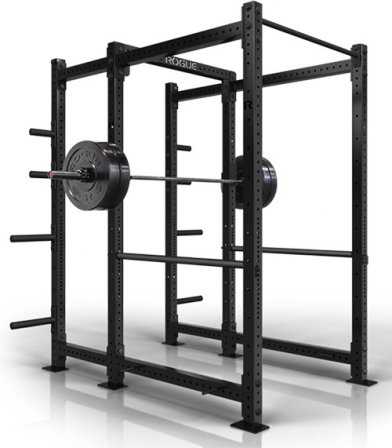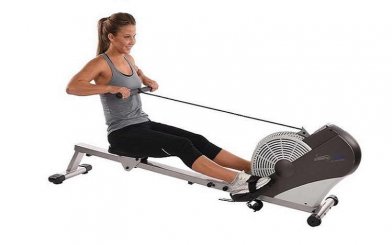10 Essentials for Your Home Climbing Wall
Indoor rock climbing is finding huge appeal as an adrenaline-pumping workout option. As a result, rock climbing gyms are popping up all over the place. But you don’t have to wait for a facility to open near you. Create your own home climbing wall in your basement. It’ll get the kids off the computer and it will put all of the benefits of the home climbing wall workout at your fingertips. It’s easier and more cost-effective than you think to set up your very own home climbing wall. Here is your essential list.
#1: A Climbing Wall
The home climbing wall will be the centrepiece of your home gym. You can either build your own home climbing wall from scratch, purchase a do it yourself kit or have the whole thing professionally installed. You’ll want a high ceiling (in excess of 8 feet) so the garage or basement is going to be the ideal home climbing wall location. You should think in terms of a 45-degree overhang wall. It will allow you to train your lock-off and grip strength, power and muscular endurance.
When selecting the hold for your climbing wall, you’ll want to start with a starter kit that includes a good variety of holds, jugs, bolts, t-nuts and a nut wrench. After a few weeks, you can add to this base. In addition, tot-nut holds, which should form the core of your wall, you can select some screw-on holds to fill in spaces where you don’t have studs. The feel and texture of the grip are very important. Look for a grip that has a smooth, rock-like surface. Avoid irregularities in the gripping area.
#2: A Safety Mat
Safety Mat is a paramount concern when we’re talking about climbing. You need a quality set of safety mats to cover your entire home climbing wall. Look for a mat that provides at least 2 inches of cushioning. The mats should fold up onto the home climbing wall when not in use via a hassle-free locking system.
#3: A Suspension Trainer
Suspension training is the perfect complement to a home climbing wall. It will allow you to simulate all of the climbing moves that you do on the wall, in addition to functionally strengthening the muscles of your back, arms and legs.
Here’s what to look for in a suspension trainer:
Straps – these are your lifeline; make sure they are made of thick, fine webbing and that the buckles are made of carbon fiber.
Handles – slip-resistant, comfortable floor, and handheld will allow you to maintain your grip without wincing in pain.
Anchor Points – the anchor to the door, ceiling or wall must be rigid and reliable. Check, too, that it doesn’t leave any marks on the surface of your anchor.
DVD – Suspension training is new and different. A high-quality DVD that runs you through the set-up and gives you a range of programs is an essential part of a good system.
#4: Pull Up Bar
The pull up is the go-to exercise for getting you home climbing wall. That means that you’ll need a quality pull up bar in your home climbing wall. Get yourself a solid garage climbing wall bar that meets these requirements
- Maximum load capacity – Look for a 400-pound max load (the maximum load of a wall-mounted pull-up bar will be greater than that of a doorway pull up bar).
- Extension from the wall – you need a minimum of 14 inches wall clearance
- Installation kit – this should be included, along with fixing bolts.
- Nonslip grips.
- Range of gripping positions, including neutral grip.
- Provision for extra exercises, including dips.
- Adjustability – an adjustable pull-up bar will allow you to work with a range of stud distances.
#5: Barbell with Fat Gripz
You’ll need a quality barbell in order to perform military presses, barbell curls and rowing movements. Go for a bar that is at least five feet long and that has knurled handgrips. Ezy-spin collar bars make loading and unloading plates a breeze and they guarantee you a tight clamp on the weights. Investing in fat grips is a smart move when you’re into climbing. These are simply foam type pads that you slip onto the bar where your hand grips it to make your forearms work a lot harder on each rep. This will have a massive pay-off when it comes time to grab that home climbing wall holds.
#6: Dumbbells
A quality set of dumbbells is a fundamental piece of any good home climbing wall, and your rock climbing pull up bar is no exception. You’ll need a range that will allow you to perform light exercises such as deltoid shoulder raises as well as the heavy hitters like one arm rowing. You could go out and purchase a full range from 10 to 80 pounds in 10-pound increments. If your budget accommodates that expense, all power to you. More than likely, though, you’ll be bound by your finances. The most economical option is to find yourself a top-notch adjustable dumbbell, which will allow you to select weight from 10 to 80 pounds from a bed of weight plates.
Here’s what to look for when shopping for a pair of adjustable dumbbells:
- Choose a set with 10-pound increments
- Go with a dial as opposed to a pin adjustment system for less downtime between sets
- Check that the overall dumbbell length isn’t going to impede your movement on exercises like one arm rowing and overhead presses
- If buying online, be aware of the freight cost
#7: Kettlebells
Kettlebells allow you to do a whole new dimension of movements beyond barbells. They are more functional and work better with plyometric and compound movements that are essential to developing a rock climbing physique. You’ll want cast iron kettlebells which are available in molds of various sizes. Stay away from adjustable kettlebells; they’re too cumbersome to change the load. If you can only afford two kettlebells to begin, get one heavy (54 lb) and one light (20 lb). See more of our review of the best kettlebells.
You don’t want the handle to be too smooth or too rough. A good handle will almost float in your palm. You should select kettlebells with thick enough handles to really test your forearms in preparation for the work they need handle on the wall. However, you don’t want a handle that is so thick that your fingers can’t get around it.
#8: Fitness Ball
A Fitness ball, otherwise known as a Swiss ball, is a great core strengthener; a vital area of need for rock climbers. The effectiveness is in the instability of the ball. Due to this instability, the core muscles are required to do extra work to keep all of the other muscles of the body stable during exercise movements. The delicate, small stabilizing muscles of the body are also forced to make instant reflex adjustments mid-exercise in order to maintain balance.
The instability of the Fitness ball makes it a challenging piece of equipment to exercise on. People who have been exercising for years on a solid platform, such as an exercise bench, are often surprised at just how much more challenging it is to do the same movement on an exercise ball.
To determine what size ball you need, sit on the ball with your feet flat on the floor. If your legs form a 90-degree angle then you’ve got the right size.
#9: Hangboard
A hang board is a device that is attached to either your wall or ceiling and features a number of grip options that allow you to perform a dead hang along with various other options. It is a great way to develop the strength and endurance of your forearms and grip strength. Look for a board that features a number of holds that you are able to barely grip on to. It should also have a good number of edges and crimps.
#10: Resistance Bands
Resistance bands will allow you to perform a number of specialized exercises that target the small but vital muscles of your upper back and shoulder region. Because resistance bands don’t work against the force of gravity they are able to provide a freer range of motion, allowing you to work in ways that you simply cannot when using barbells and dumbbells. In addition, resistance band training works the muscle through both the concentric and the eccentric parts an exercise. Rubberband training can be combined with free weights provides both isotonic and linear resistance training in one workout.
The resistance level of most tube systems follows a color-coded system based on the thickness of the tube. Thicker bands will provide greater resistance. Many systems also allow you to attach more than one band to a pair of handles to instantly double the resistance level.
Summary
Get your home climbing wall equipped with our essential 10 rock climbing exercises at home and you will be the envy of your rock climbing buddies. With all of this killer gear, you’ll be able to design a range of short, sharp and intense workouts that will get you climbing higher, faster, and longer.
Save this to Pinterest:
















